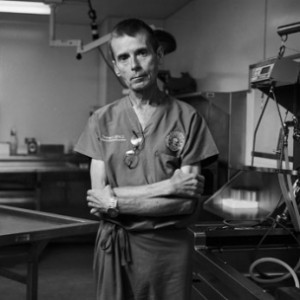The sheriff’s office does not have the resources to open every post-mortem examination Gill did for Solano County, Faulkner said. “In many cases, there’s really nothing left to work with,” he said.
Stanton hired Dr. Bennet Omalu, chief medical examiner for the San Joaquin County Sheriff’s Office, to re-examine 32 of Gill’s autopsies, several of which involved a death that resulted from violent crimes. Omalu found problems in more than half of the post-mortem reports, the most egregious example being the 2008 death of Ricky Meyi.
The remains of Meyi, a 50-year-old Vallejo resident, were found burned and left in a ditch. Gill performed Meyi's autopsy and concluded that the man died of “complications of blunt force injuries.”
But Gill’s initial report did not document any blunt-force trauma. During a second exam, Gill listed blunt-force injuries on Meyi’s back, though Omalu disputed that such injuries could have killed the man. Those markings might have not been injuries at all, as blood settles after death, leaving marks that Gill might have mistaken for trauma, Omalu said.
Seven people accepted plea agreements with prison sentences related to Meyi’s death, despite the lack of evidence proving what killed him. The Solano County district attorney based much of the case on witness statements that said Meyi was beaten by a group at a party. Julie Underwood, the lead prosecutor on the case, told California Watch that she did not read Omalu's review and dismissed it as "one person's opinion."
A joint investigation by California Watch, ProPublica and PBS Frontline last year detailed how Gill, 68, has repeatedly resurrected his career in coroners’ offices across the United States over the past two decades after autopsy errors undermined criminal cases and misdiagnosed causes of death. The California State Bar called the doctor “incompetent” in a 2006 report on a botched homicide investigation in Sonoma County.
Gill was working for a private firm, Forensic Medical Group, when he performed the Solano County autopsies. The firm provides forensic pathology services to more than a dozen Northern California jurisdictions.
Forensic Medical Group fired Gill in early 2011, saying it did not have enough cases to keep the doctor.
Omalu discovered Gill continued to struggle with identifying evidence during autopsies and interpreting test results.
In 2007, Christina Baxley, a 41-year-old woman, was shot to death while walking her dog. Although the cause of Baxley’s death was not in question, Gill’s autopsy appears incomplete, as he misidentified certain injuries and entirely overlooked a bullet hole, according to Omalu.
“Review of the scene and autopsy pictures reveals a vividly obvious gunshot wound in the left anterior chest, which was not described in the autopsy report,” Omalu wrote.
Gill also allegedly misinterpreted a toxicology report in the death of David Slaughter, who was discovered unresponsive in his cell at California State Prison, Solano in January 2008.
In the autopsy report, Gill listed Slaughter’s cause of death as “morphine toxicity.” Omalu’s review of Slaughter’s blood results determined the death was caused instead by a toxic combination of amphetamines and heroin – a significant discrepancy.
Omalu noted another key shortcoming in Gill’s work on Slaughter’s death: no visual evidence.
“Digital photographic documentation of autopsy findings are expected accompaniments of autopsy reports in this modern day, especially in homicidal cases and unique cases like this case involving sudden in-custody deaths,” Omalu wrote. “This is a critical flaw."
Omalu argues that Gill repeatedly failed to meet basic standards of the profession. In multiple reviews, Omalu wrote in all caps: “There is a constellation of critical flaws in this case.”
Ryan Gabrielson is an investigative reporter for California Watch.
